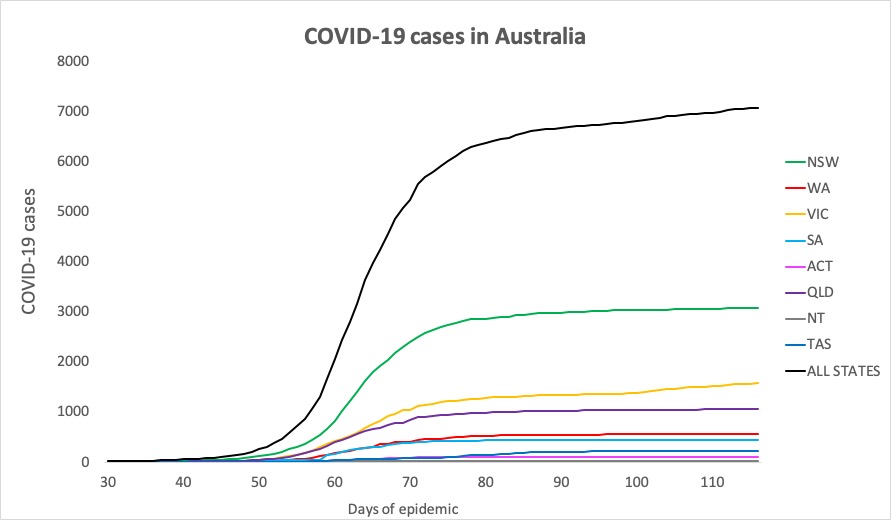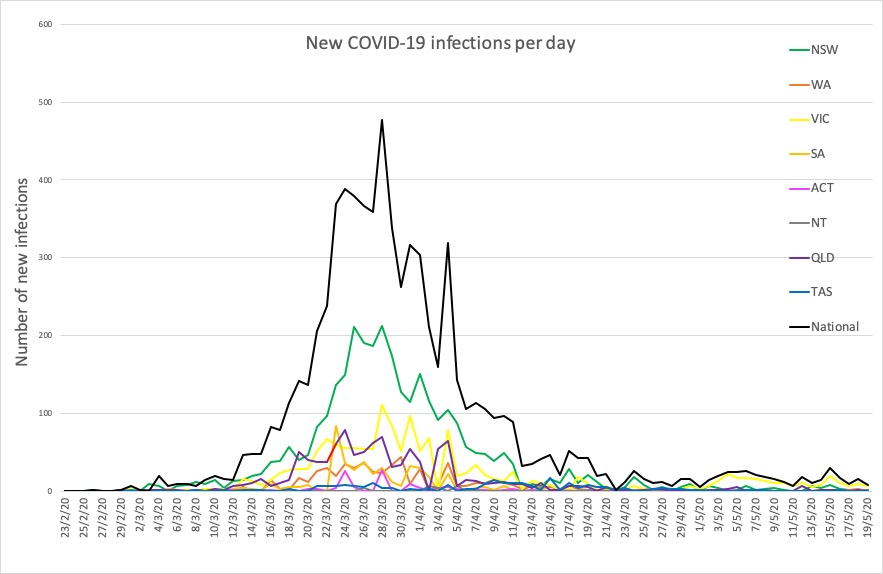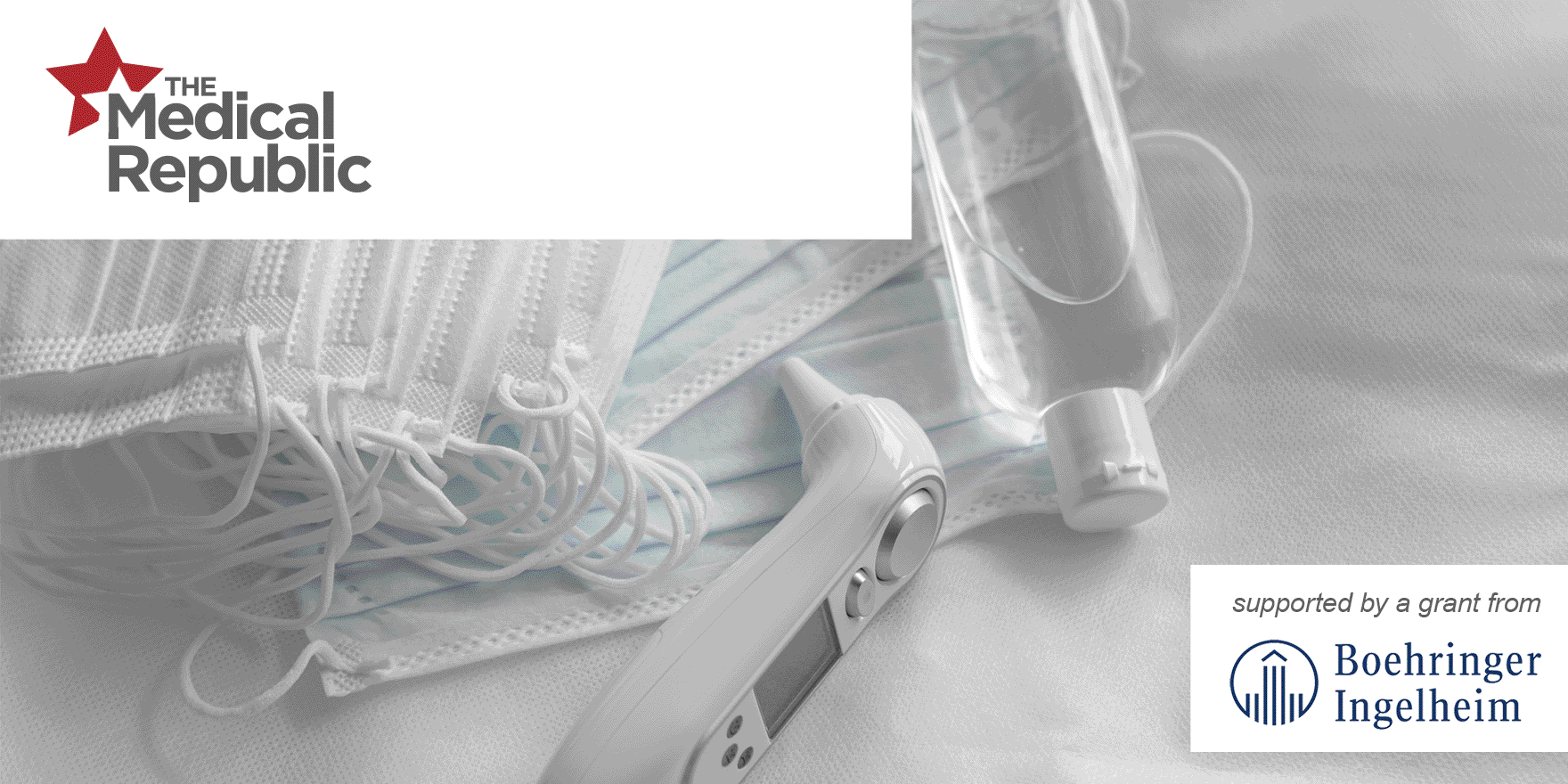The burns centre at Birmingham Hospital in the UK has reported a 30-fold increase in children presenting with scalds related to steam inhalation - a popular home remedy for common colds and respiratory infections – since the COVID-19 lockdown.
That’s it for today on The Medical Republic‘s live COVID-19 blog.
Thanks to our sponsor and supporter for funding this project with an independent grant, Boehringer Ingelheim.
The latest
- Increase in scaldings reported due to parents using steam inhalation for children.
- Prospective cohort study shows outcomes in 1150 adults hospitalised with COVID-19.
- The Lancet v Trump – Round 2.
- The burns centre at Birmingham Hospital in the UK has reported a 30-fold increase in children presenting with scalds related to steam inhalation – a popular home remedy for common colds and respiratory infections – since the COVID-19 lockdown.
“The evidence base of the practice is weak, with unproven theories that the steam loosens mucus, opens nasal passages, and reduces mucosal inflammation, or that the heat inhibits replication of viruses,” the authors wrote in the Lancet.
The unit normally treats an average of two children a year with scalds related to steam inhalation, but have had six cases in the past month.
The most common injuries resulted from accidental spillage of the boiling water, and it wasn’t just Birmingham in the hot seat: the authors contacted burns services across England and found around half were also seeing an increase in scalds related to steam inhalation. They recommended that clinicians actively discourage the practice, and educate parents about alternative treatments for their child.
- Some bigger prospective studies of COVID-19 outcomes are starting to appear in the major journals now.
The Lancet has just published a prospective cohort study of outcomes in 1150 adults admitted with COVID-19 to two New York hospitals in March, of whom 22% were considered critically ill and admitted to ICU or a high-dependency unit.
The median age was 62 years, 67% were men, 82% had at least one chronic illness, and 46% were considered obese, including just over 70% of the patients aged under 50 years of age. Health care workers made up 5% of the patient cohort.
Patients presented most commonly with shortness of breath, fever, cough, muscle aches and diarrhoea. Most patients also had elevated concentrations of D-dimer, ferritin, C-reactive protein and inflammatory markers, as well as lymphocytopaenia.
Overall, 39% of patients died, after a median of nine days in hospital, and 41% of those who were intubated died. Most of the deaths were in those aged over 50 years, and the authors estimated that each additional 10 years of age was associated with a 31% increased risk of dying in hospital. Chronic heart disease was associated with a 76% higher risk of death, chronic lung disease with a nearly three-fold higher risk of death, and each decile increase in D-dimer levels was associated with a 10% increase in the risk of death.
Nearly three-quarters of patients were treated with hydroxychloroquine, 9% received remdesivir, and around one-quarter were treated with corticosteroids.
- Few things bring me greater joy these days than seeing Donald Trump get schooled, especially when it’s done in such an icily polite British fashion.
After Trump published his four-page letter to WHO Director-General Dr Tedros Adhanom Ghebreyesus outlining his grievances with WHO’s allegedly close ties to the Chinese government and how this has undermined the organisation’s response to COVID-19, the Lancet fired back with a short missive correcting Trump on a key point of his argument.
Trump accused WHO of consistently ignoring reports of the virus spreading in Wuhan as far back as early December, citing reports published in the Lancet at the time.
“This statement is factually incorrect,” says the Lancet, pointing out it did not publish any reports of the virus in December, and the first publications were in late January, from a team of researchers and clinicians in China.
“The allegations levelled against WHO in President Trump’s letter are serious and damaging to efforts to strengthen international cooperation to control this pandemic,” the Lancet wrote.
We gleefully await the next round of this battle. *ding ding*
- Here are today’s confirmed COVID-19 infection figures from around Australia, to 9pm yesterday:
National – 7068, with 99 deaths and 6411 listed as recovered
ACT – 107
NSW – 3078
NT – 29
QLD – 1057
SA – 439
TAS – 228
VIC – 1573
WA – 557


Disclaimer: The content on the Medical Republic COVID-19 blog is independently created by Medical Republic without input from Boehringer Ingelheim Pty Ltd. The views, information, or opinions expressed on the Medical Republic COVID-19 blog are Medical Republic’s own and do not necessarily represent those of Boehringer Ingelheim Pty Ltd. Boehringer Ingelheim Pty Ltd is not responsible for and does not verify the accuracy of any content on the Medical Republic COVID-19 blog.


